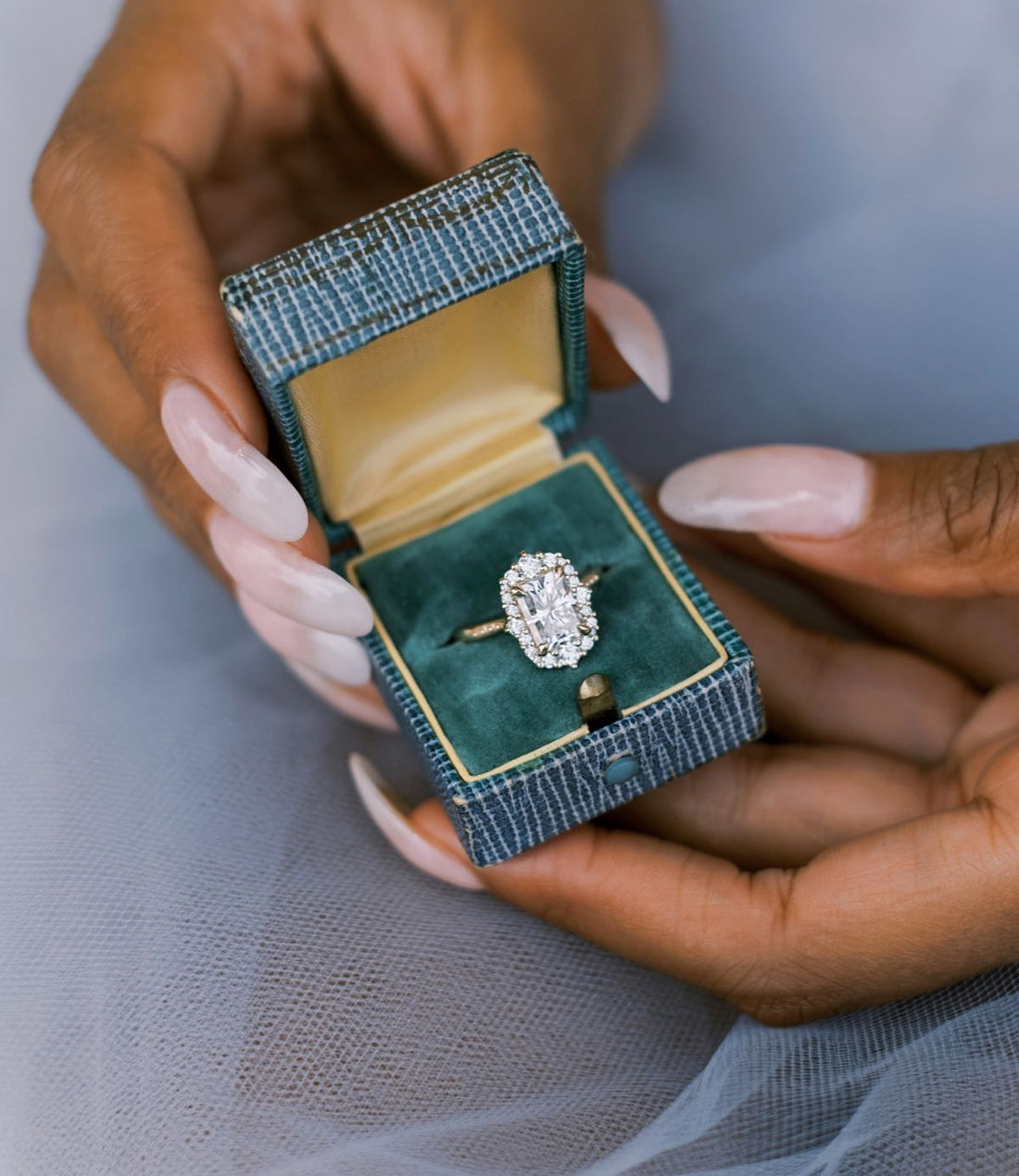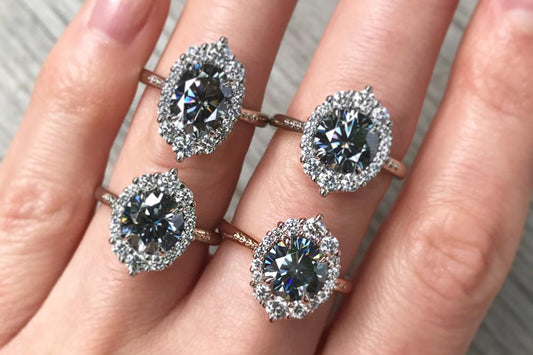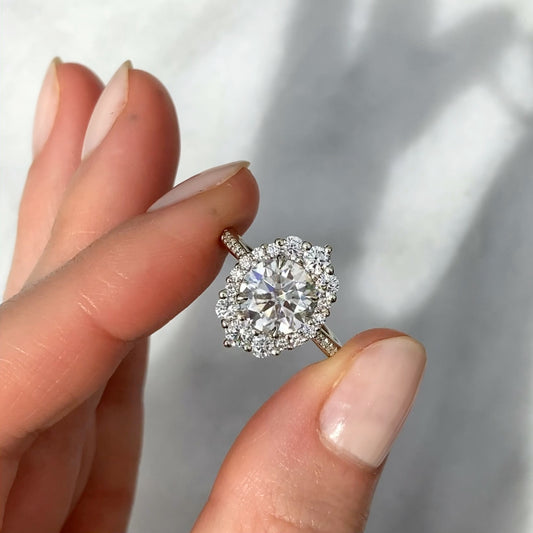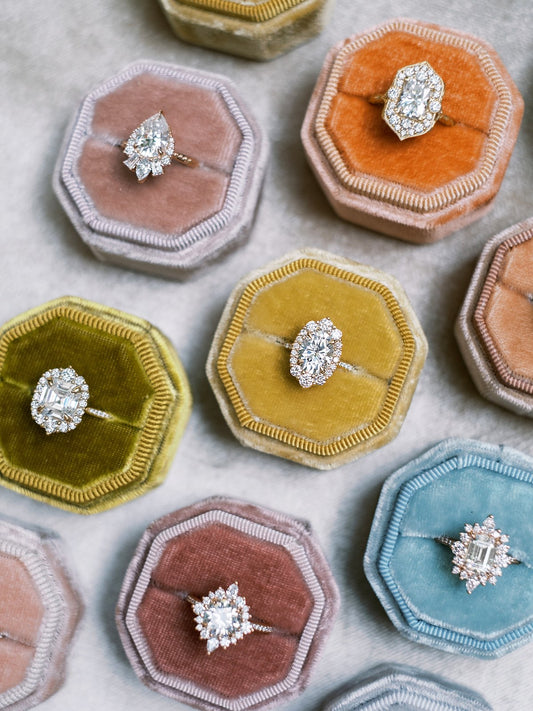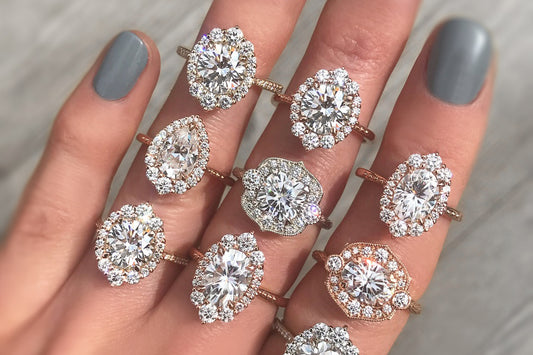Charles & Colvard offers an emerald cut and radiant cut in their Forever One Moissanite collection. I also recently began cutting radiant and emerald cuts for my own line of Iconic Grey Moissanite too! (You can read more about my own line of Grey Iconic Moissanite in this blog post.) The difference between the two cuts can be confusing, so I put together a comparison and history lesson.
Emerald (Step) Cuts:
Step cuts are a historical cut, and one of the first seen in jewelry. Its origins are linked to single cuts of the 1500's, and also the table cuts of the Art Deco period (early 20th century). The term "emerald cut" didn't appear until the Art Deco era, although the cutting method itself had been seen for quite some time. Its name came about because it was originally used on emeralds (the green gem), which are very brittle and can easily be chipped/cracked during the cutting process. The stepped faceting reduced breakage while cutting the emeralds. But the stepped faceting pattern soon became popular and was extended to other gemstones as well, such as sapphires, rubies, diamonds, etc.
Step cuts are just as they sound -- they're like stairs, or stepped facets, parallel to the stone's sides. The facets are long and linear. Emerald cuts have less fire and brilliance (less sparkle) than radiant cuts. This isn't necessarily a bad thing, and many people actually prefer the crisp look. Because the facets are window-like and not great at reflecting light back to the eye, it means we can easily see inclusions within a step cut stone. For that reason, only high-clarity stones are recommended for step cuts. Luckily, moissanites have amazing clarity and are a perfect candidate for step cutting; the cut actually shows off their clarity.
The emerald cut is sleek and minimalist, and pairs well with a variety of ring styles ranging from Art Deco to contemporary. Here's the Talia with an emerald cut aqua-teal moissanite center:

Radiant Cuts:
The radiant cut is a very new, only dating back to the 1970's. The goal was to create a hybrid cut combining the octagon shape of the traditional step cut emerald, with the sparkle of a modern round brilliant cut. It's the perfect combination of the elegant emerald, but with the sparkle we've all come to expect from Moissanites and diamonds. Radiant cuts have triangular facets, arranged in a non-parallel fashion. Each facet's size, shape, and angle are optimal for light dispersion and brilliance. For minerals with superior refractive properties, such as Moissanite or diamond, radiant faceting creates much more sparkle than a step cut. Radiants can be rectangular or square in shape (both with their corners cut off); I prefer rectangular shapes since they elongate the finger for an elegant look. Here's the Adeline with a radiant cut moissanite center:

